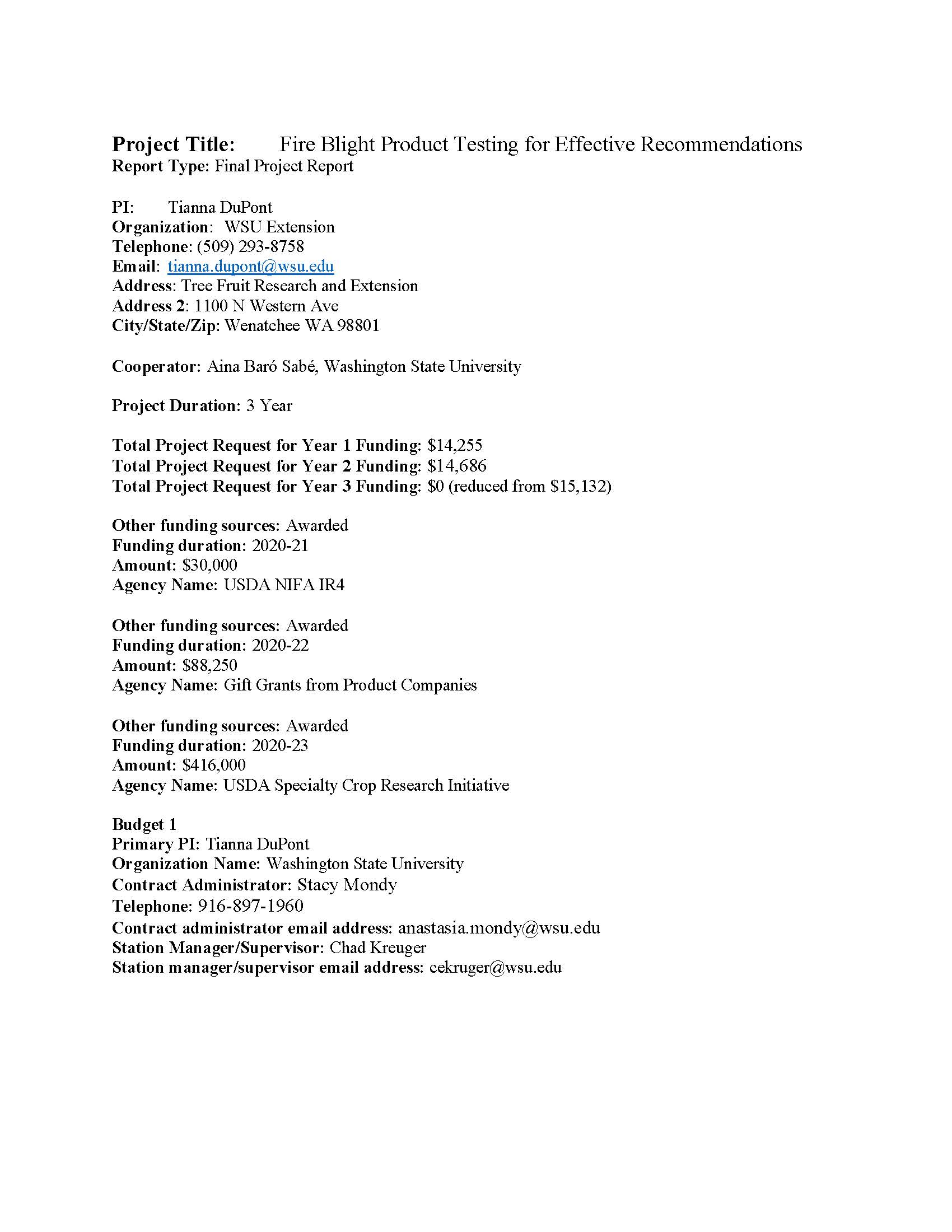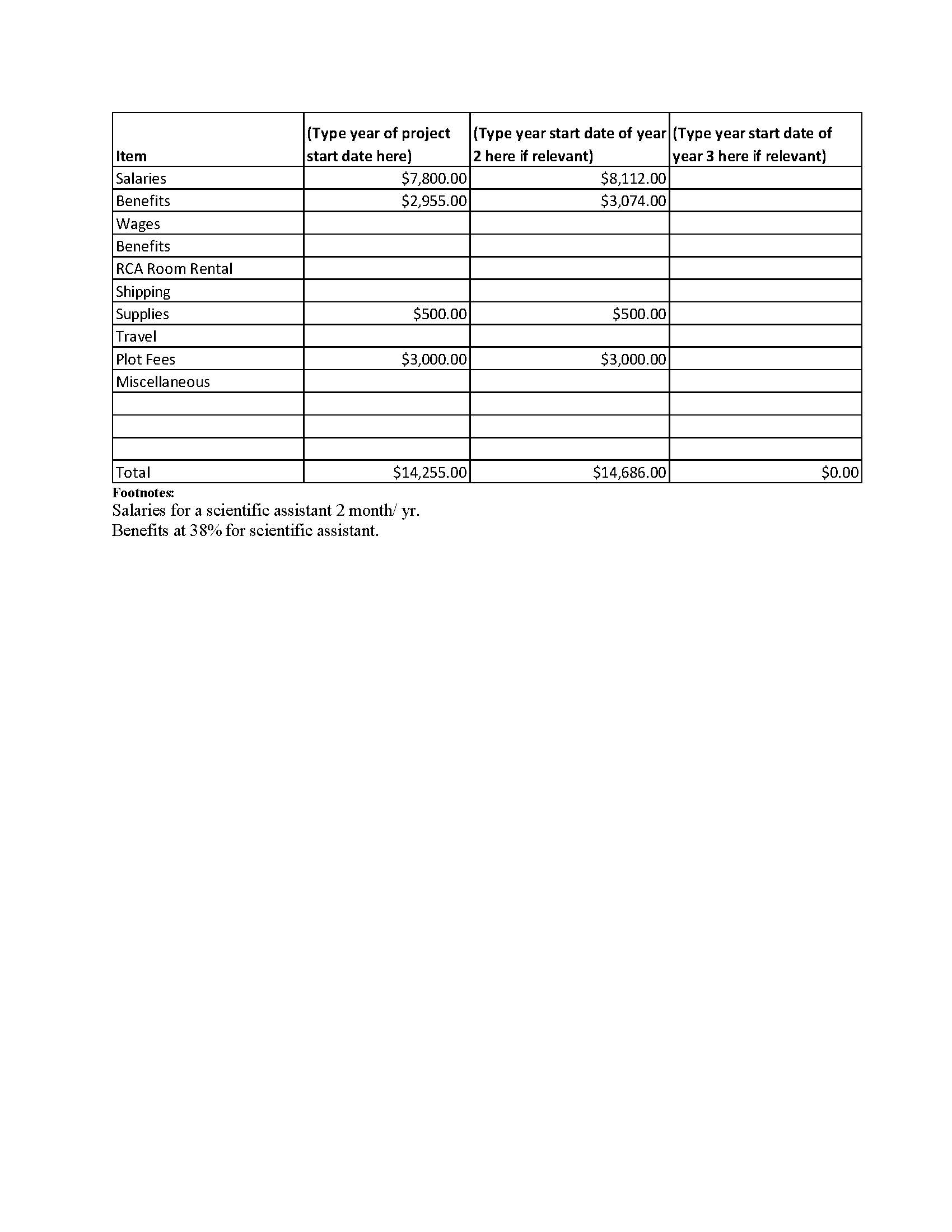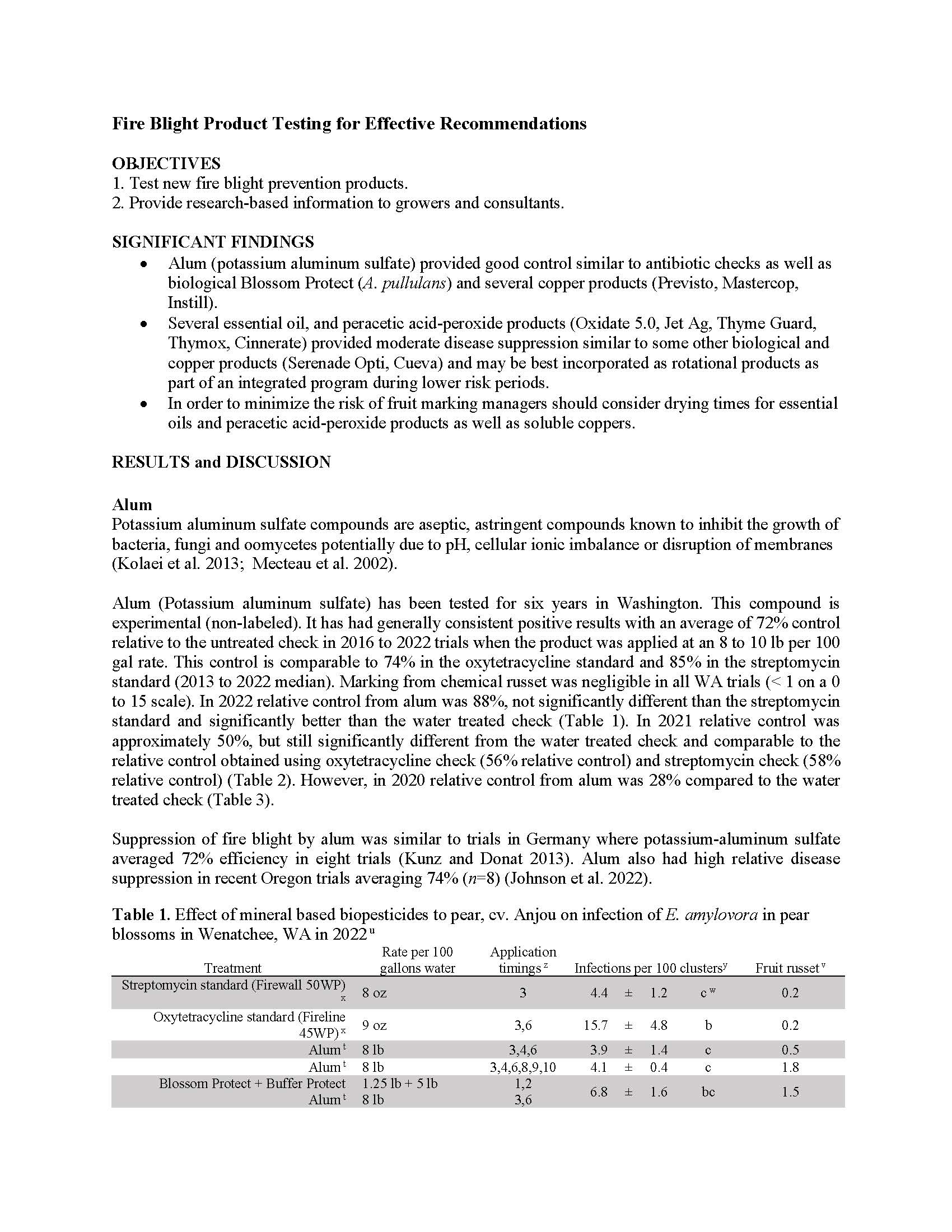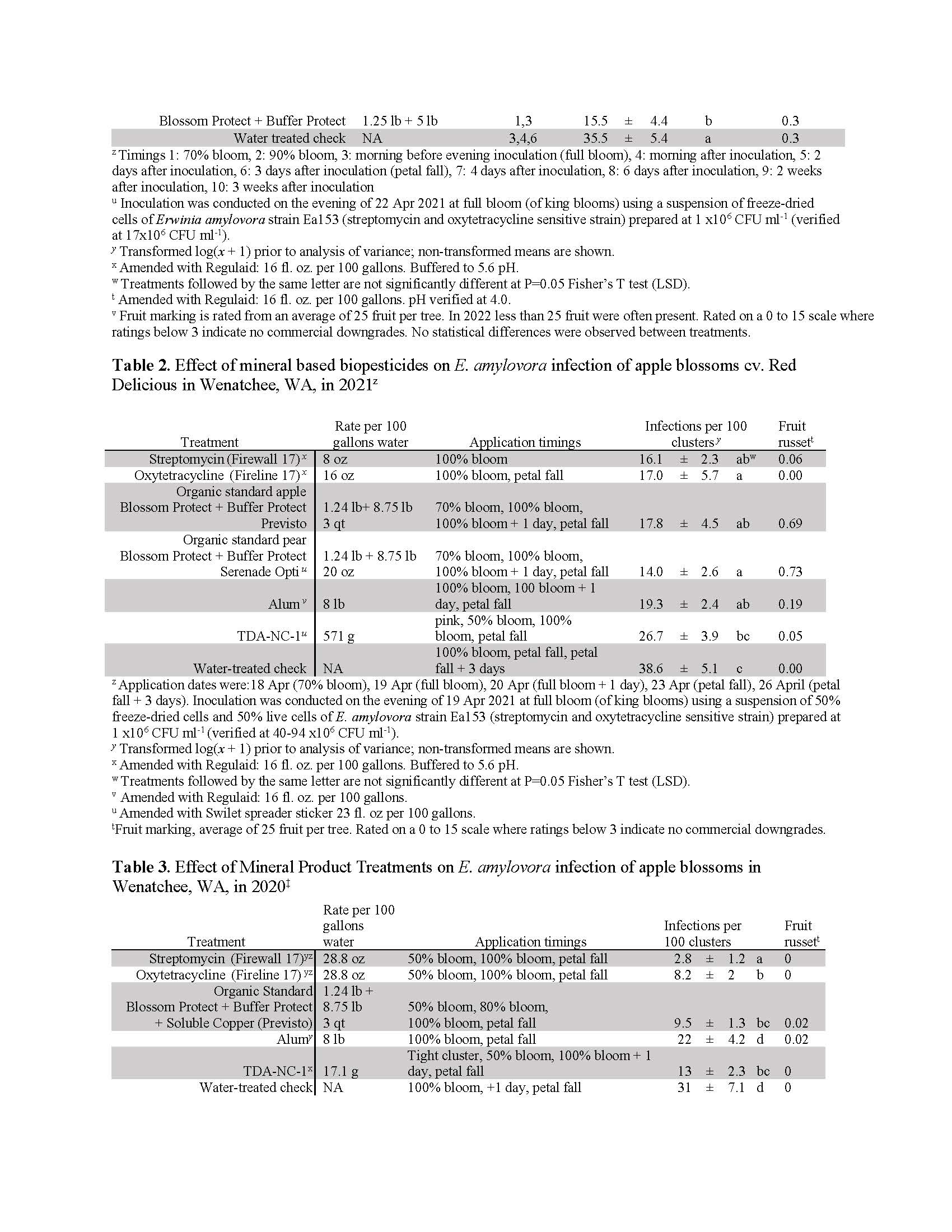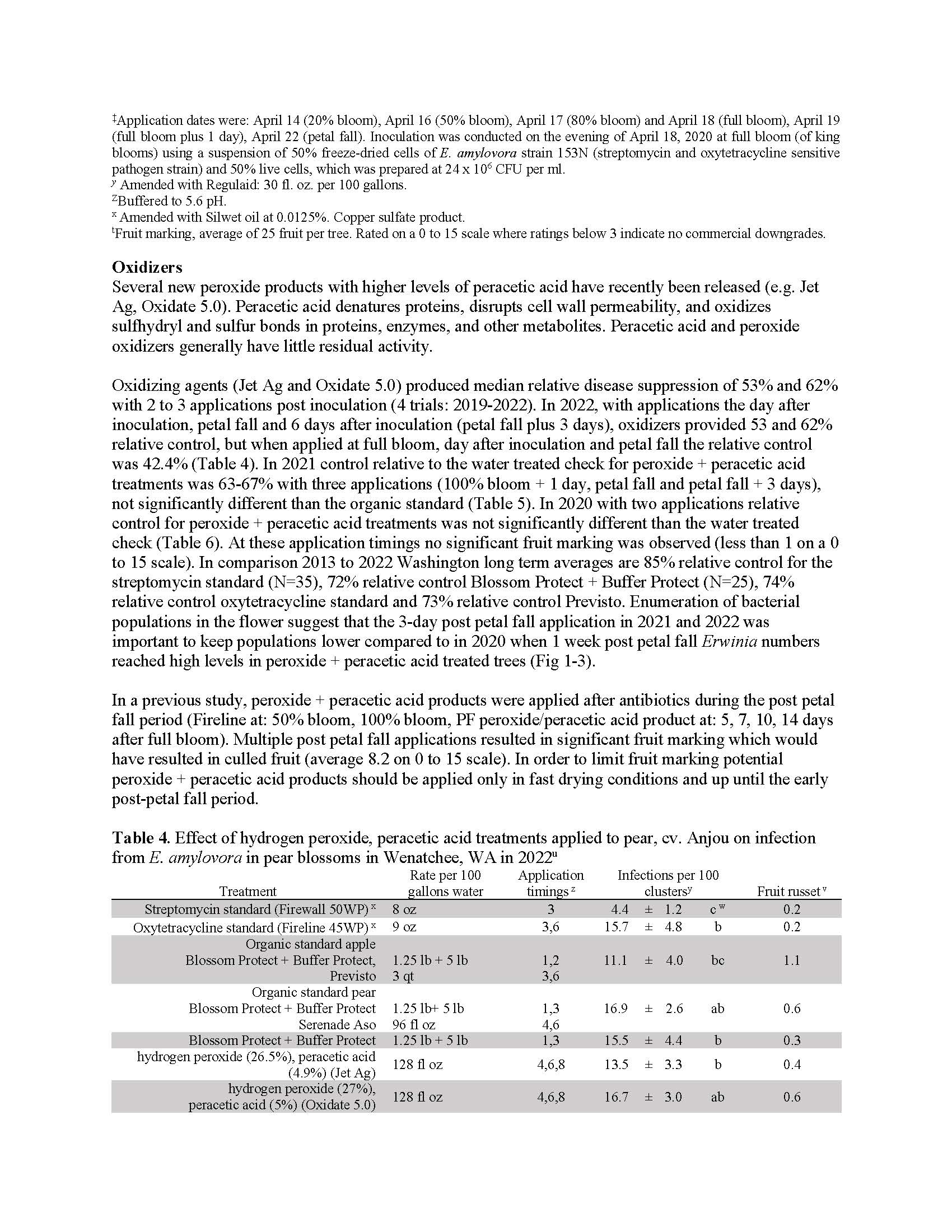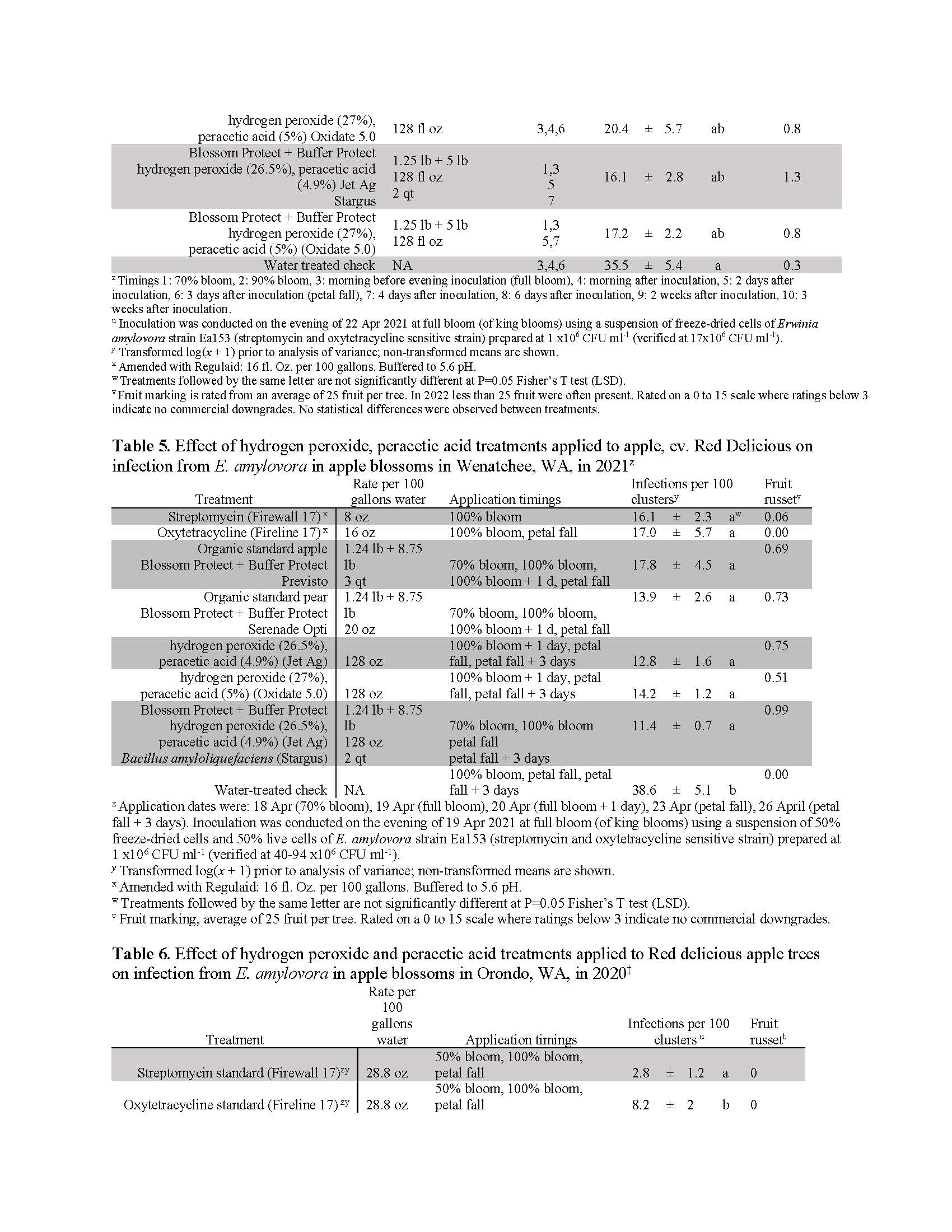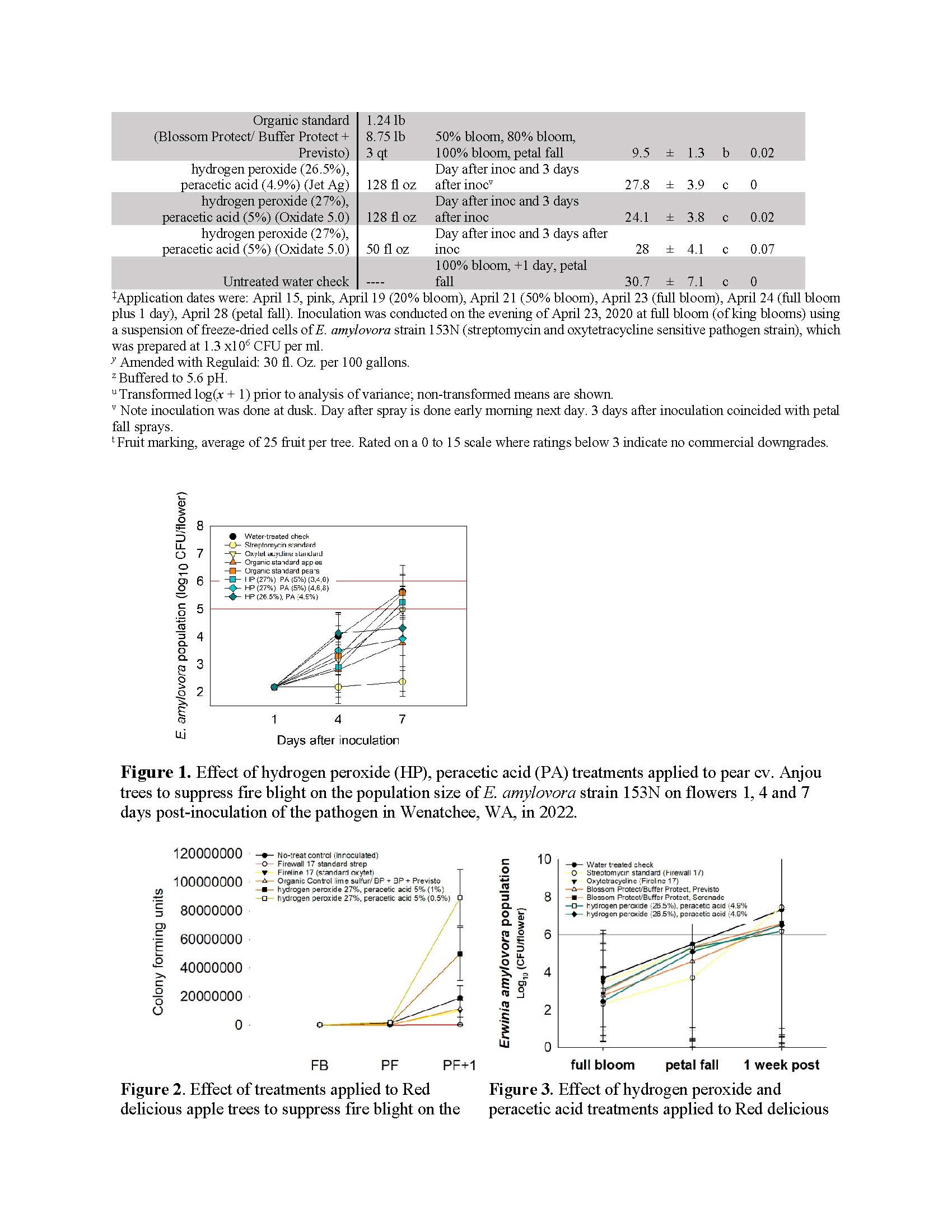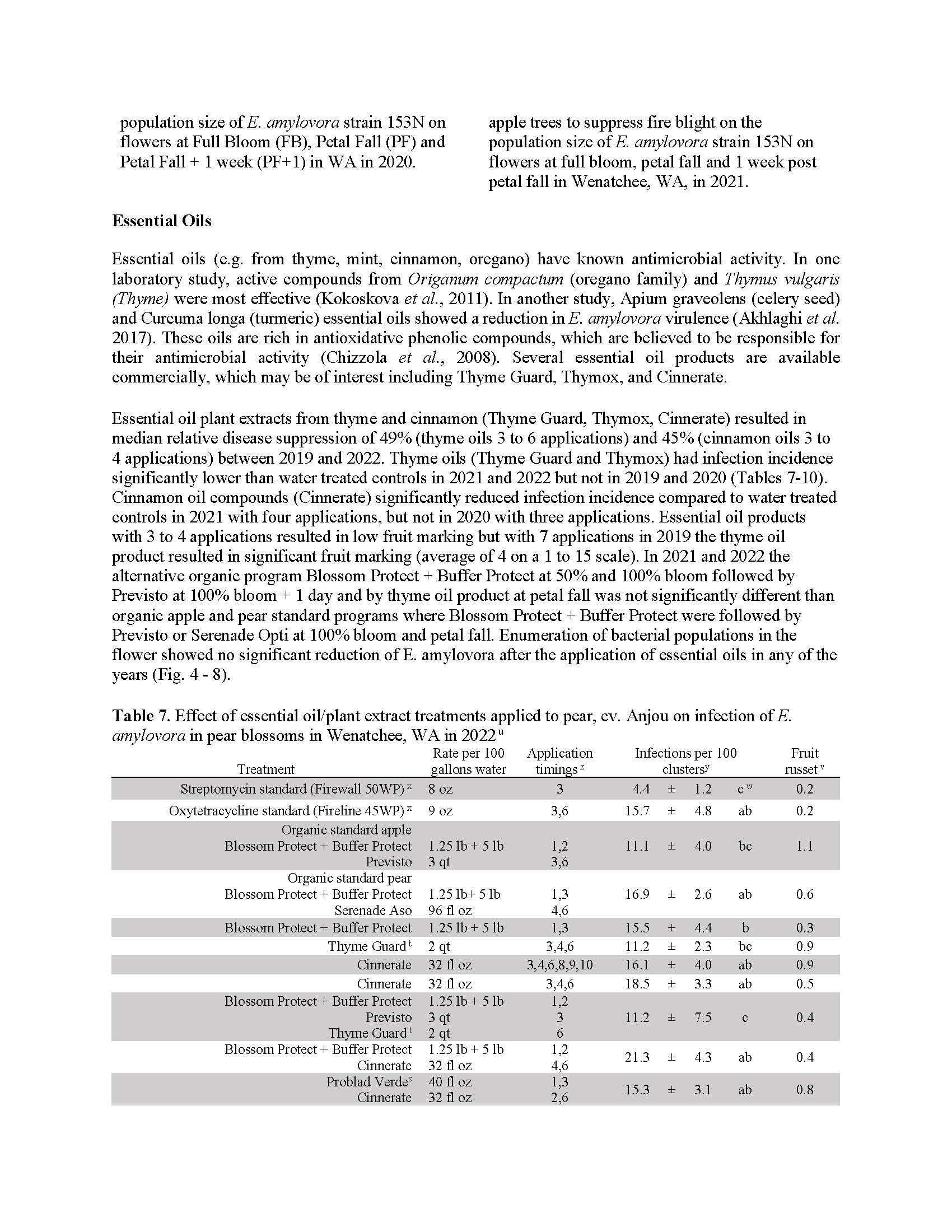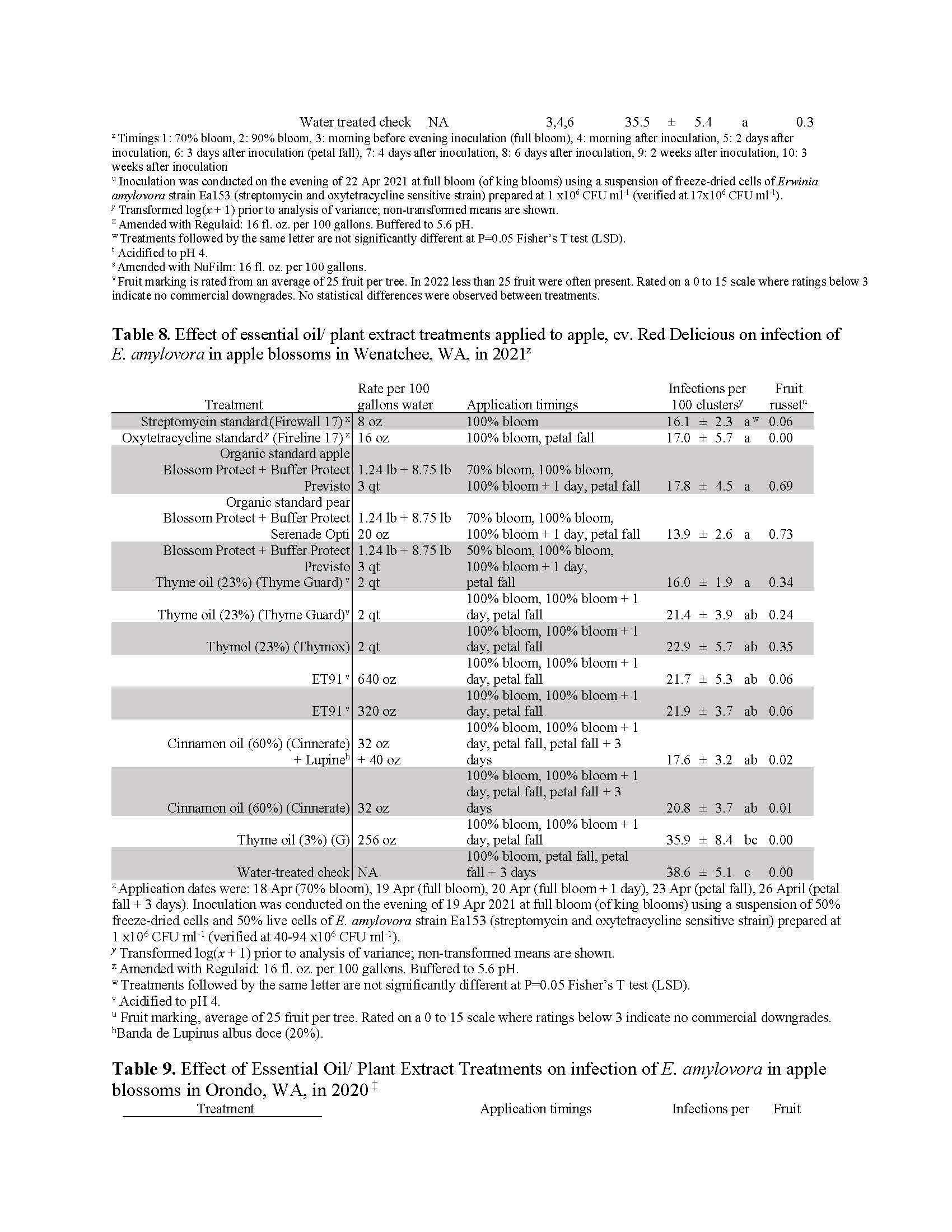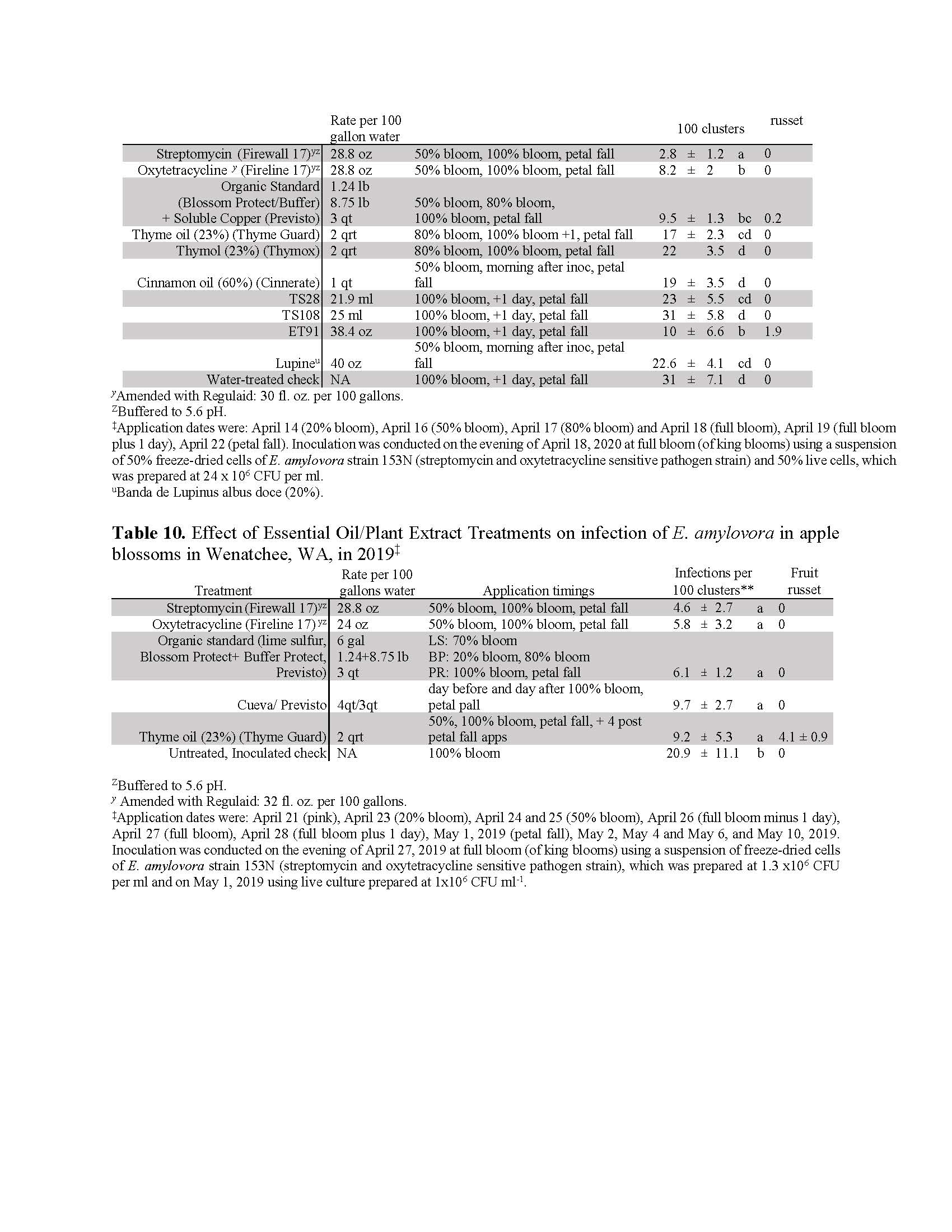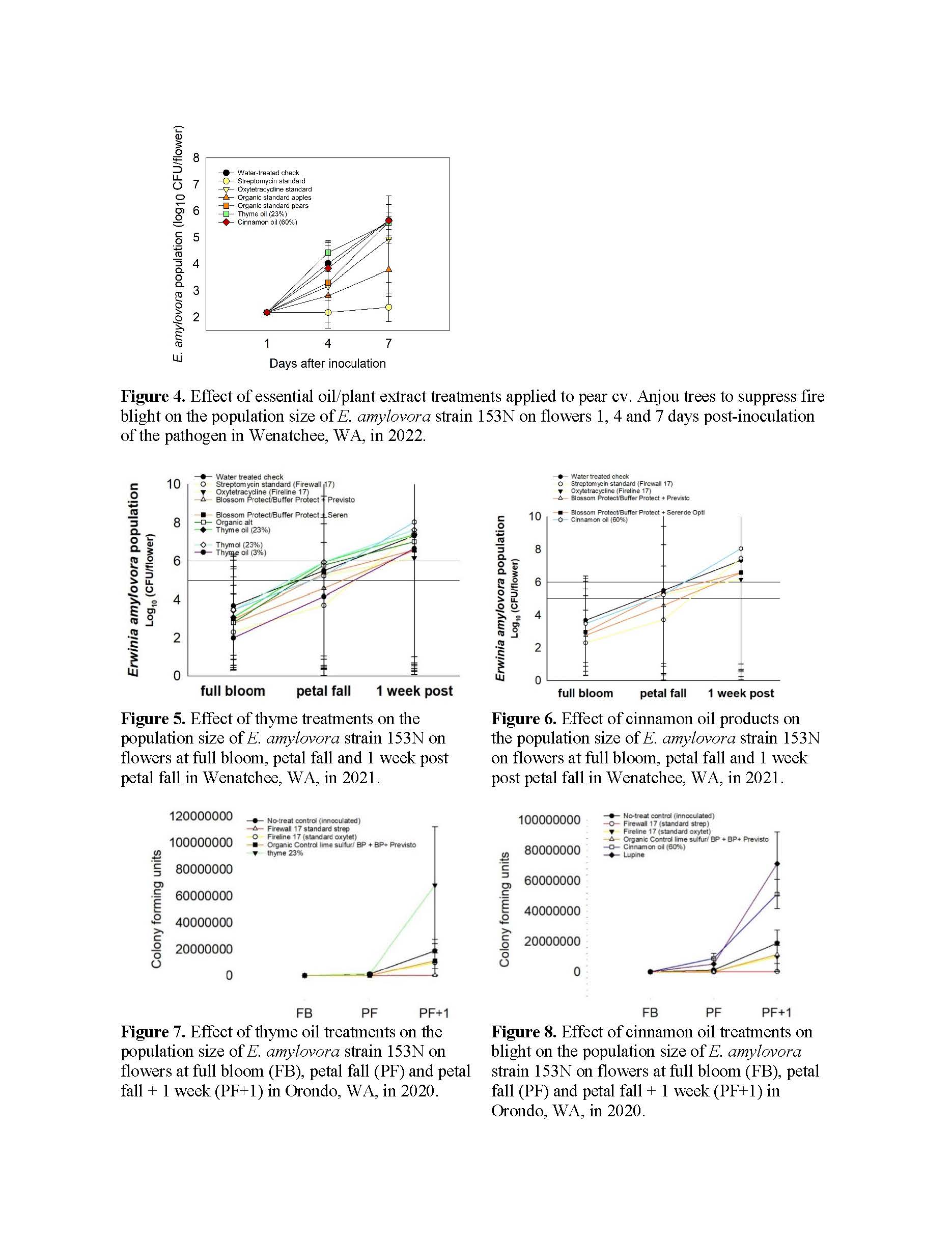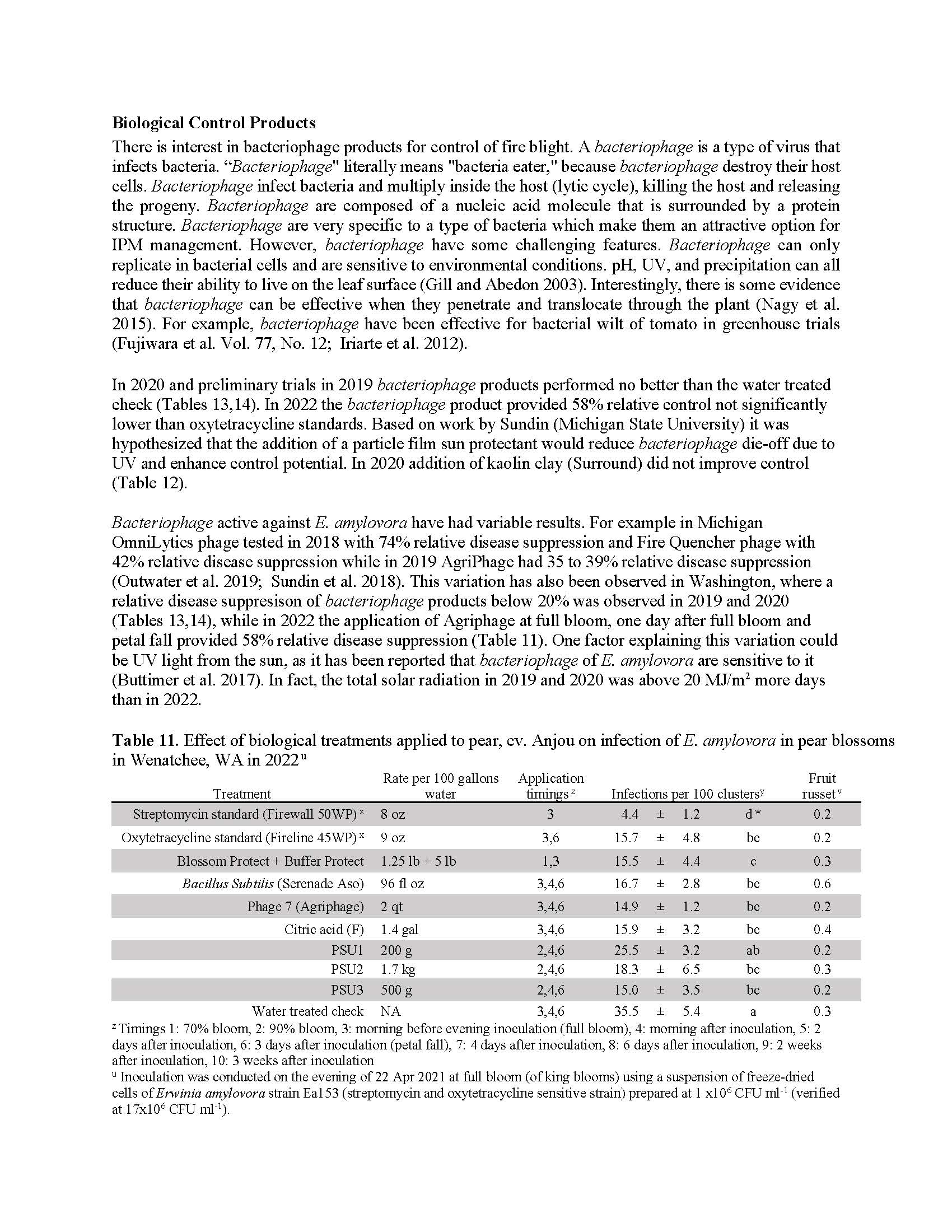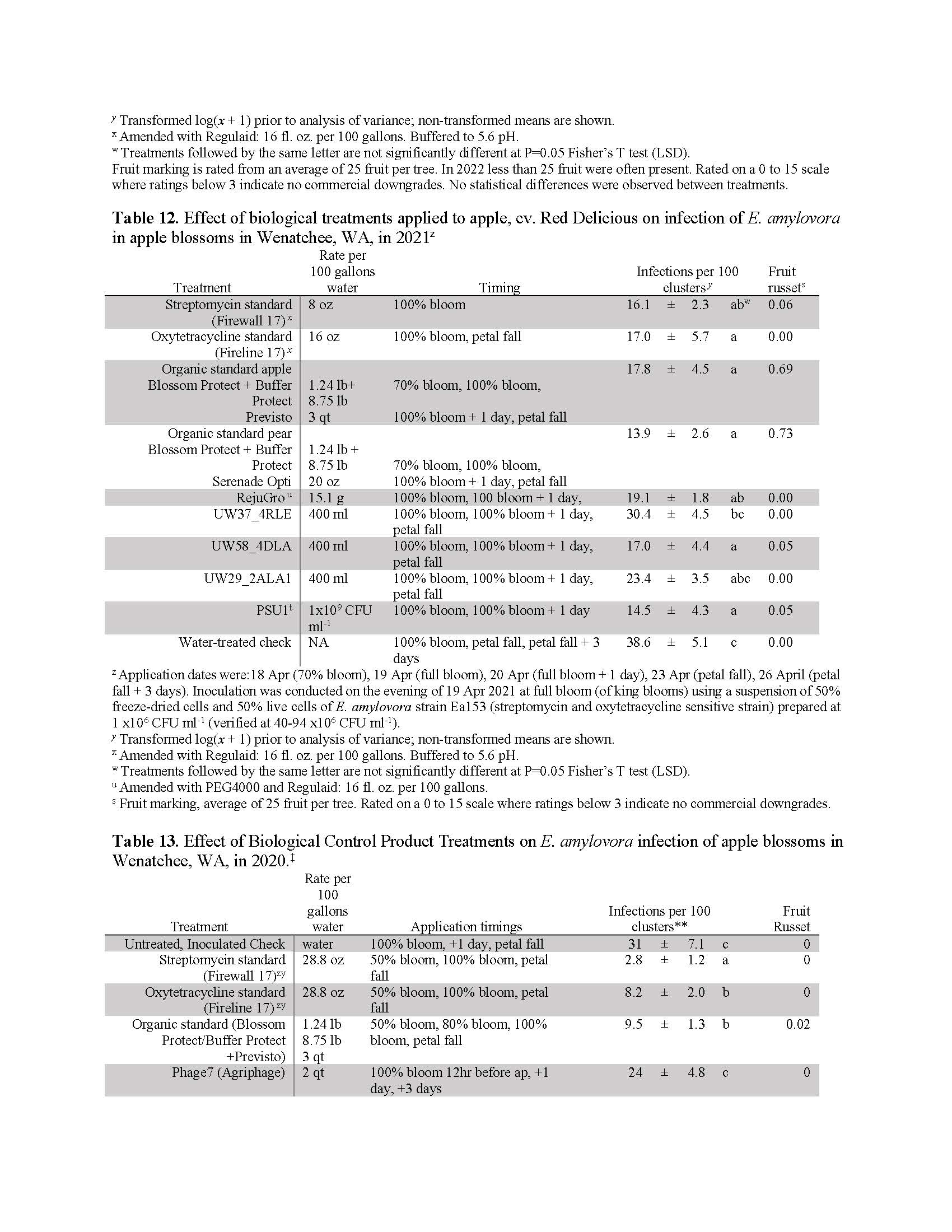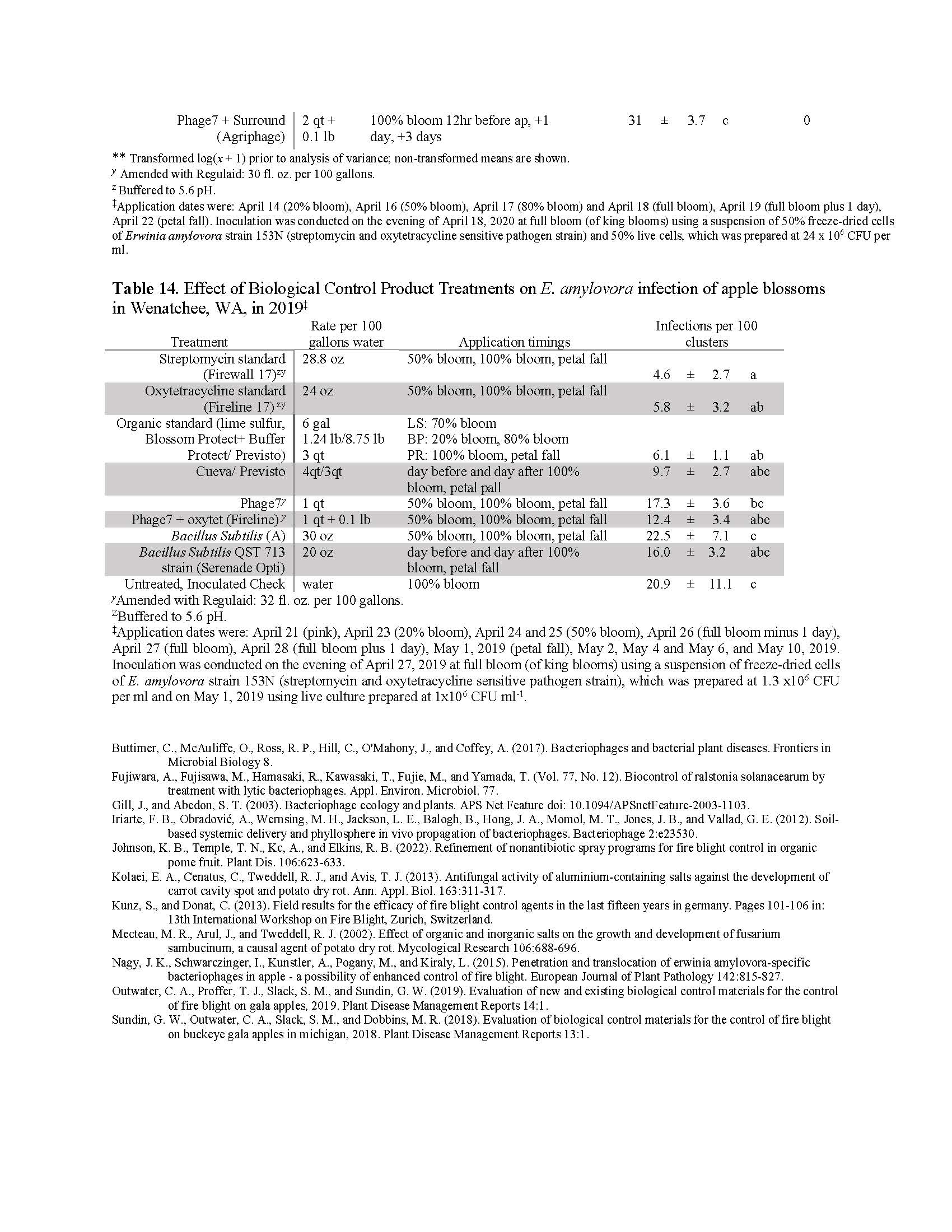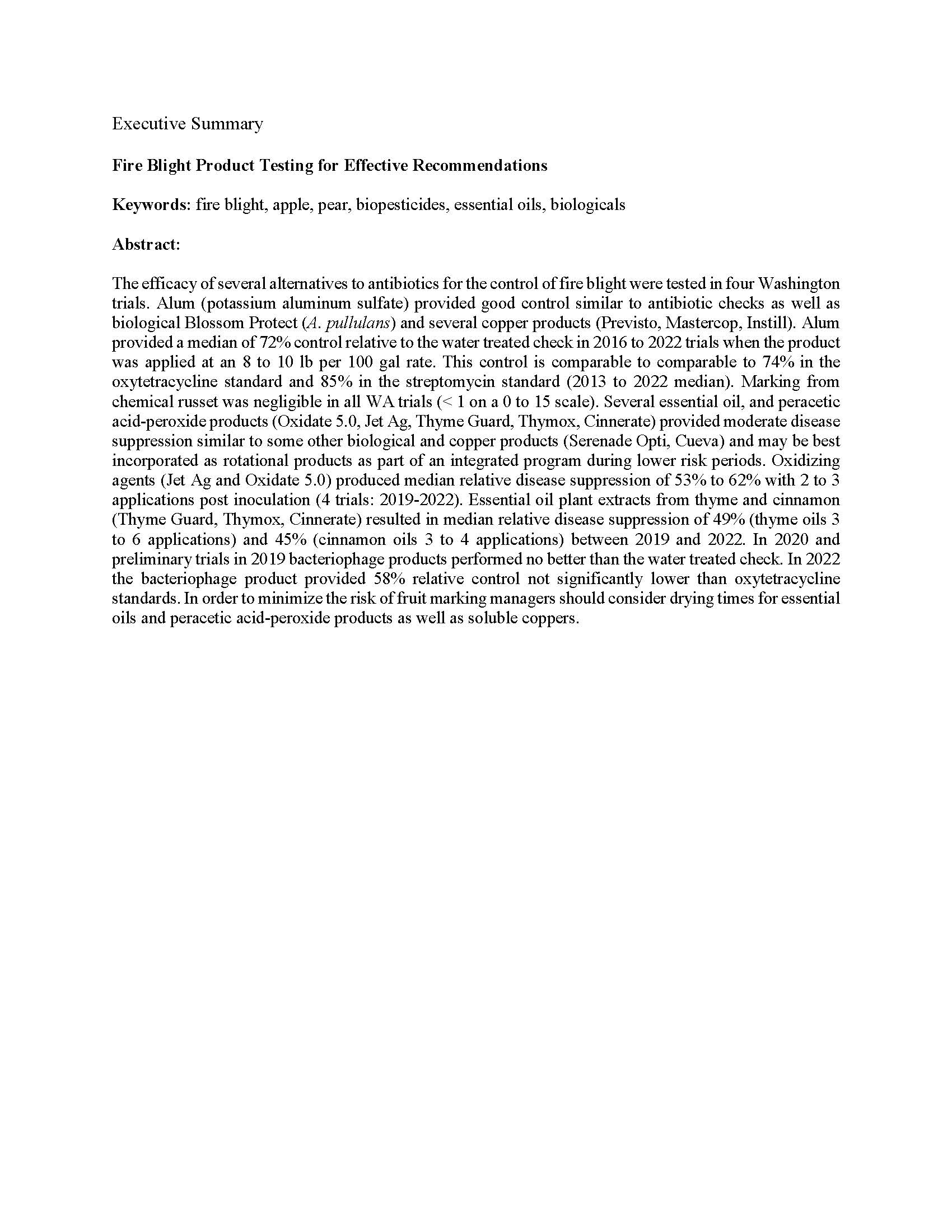Fire Blight Product Testing for Effective Recommendations
Author: Tianna DuPont
Published: 2023
Summary: The efficacy of several alternatives to antibiotics for the control of fire blight were tested in four Washington trials. Alum (potassium aluminum sulfate) provided good control similar to antibiotic checks as well as biological Blossom Protect (A. pullulans) and several copper products (Previsto, Mastercop, Instill). Alum provided a median of 72% control relative to the water treated check in 2016 to 2022 trials when the product was applied at an 8 to 10 lb per 100 gal rate. This control is comparable to comparable to 74% in the oxytetracycline standard and 85% in the streptomycin standard (2013 to 2022 median). Marking from chemical russet was negligible in all WA trials (< 1 on a 0 to 15 scale). Several essential oil, and peracetic acid-peroxide products (Oxidate 5.0, Jet Ag, Thyme Guard, Thymox, Cinnerate) provided moderate disease suppression similar to some other biological and copper products (Serenade Opti, Cueva) and may be best incorporated as rotational products as part of an integrated program during lower risk periods. Oxidizing agents (Jet Ag and Oxidate 5.0) produced median relative disease suppression of 53% to 62% with 2 to 3 applications post inoculation (4 trials: 2019-2022). Essential oil plant extracts from thyme and cinnamon (Thyme Guard, Thymox, Cinnerate) resulted in median relative disease suppression of 49% (thyme oils 3 to 6 applications) and 45% (cinnamon oils 3 to 4 applications) between 2019 and 2022. In 2020 and preliminary trials in 2019 bacteriophage products performed no better than the water treated check. In 2022 the bacteriophage product provided 58% relative control not significantly lower than oxytetracycline standards. In order to minimize the risk of fruit marking managers should consider drying times for essential oils and peracetic acid-peroxide products as well as soluble coppers.
Keywords:

